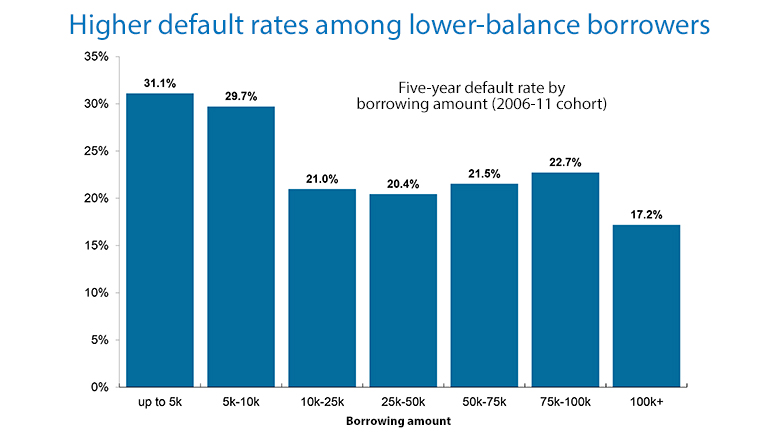While home loans still account for the vast majority of Americans’ loan debt, student loans’ share of the total is growing, according to a new federal study.
Aggregate student loan balances have continued to increase and stood at about $1.3 trillion at the end of 2016, an increase of about 170 percent from 2006, according to an analysis by the Federal Reserve Bank of New York. In 2003, student loan debt comprised 3.1 percent of the nation’s $8.1 trillion total debt, with housing loans comprising 74 percent. The student loan portion increased to 5 percent in 2008 and to more than 10 percent in 2016, according to the study.
“Aggregate student debt is increasing because more students are taking out loans, the loans are for larger amounts and the speed with which borrowers repay their debts has slowed down,” according to the report.
Less funding of higher education by states, which has coincided with significant increases in college tuition, have prompted students and families to rely more on loans to cover higher education costs, the study’s researchers note.
About 36 percent of student debt holders owed less than $10,000 in 2016, and 65 percent owed less than $25,000. About 5 percent owed more than $100,000, but those borrowers account for nearly 30 percent of total outstanding balances, the report says.
Student loan debt holders who owe less than $10,000 also tend to have higher default rates. Those who borrow up to $5,000 have an average five-year default rate of about 31 percent; the rate for those who borrow $5,000 to $10,000 is nearly 30 percent.
The study also looked at how student loan debt matches up with home ownership, which is an indicator of wealth accumulation. Not surprisingly, higher debt balances were associated with lower home ownership rates, regardless of college degree attained.
Bachelor’s degree students are more likely to own homes than those with associate degrees, regardless of whether they have student debt. Home ownership rates between associate degree earners with student loans and those who didn’t go to college is the same until about age 25, and by age 33 the non-college goers are almost 4 percentage points behind their peers who enrolled in associate degree programs and took on student debt.
As a result of the ties between college debt and home ownership, the researchers note that “changes in the way we finance higher education, with an increased reliance on student debt, may have important implications for the housing market and the distribution of wealth.”
This is something the researchers said they plan to further examine.

